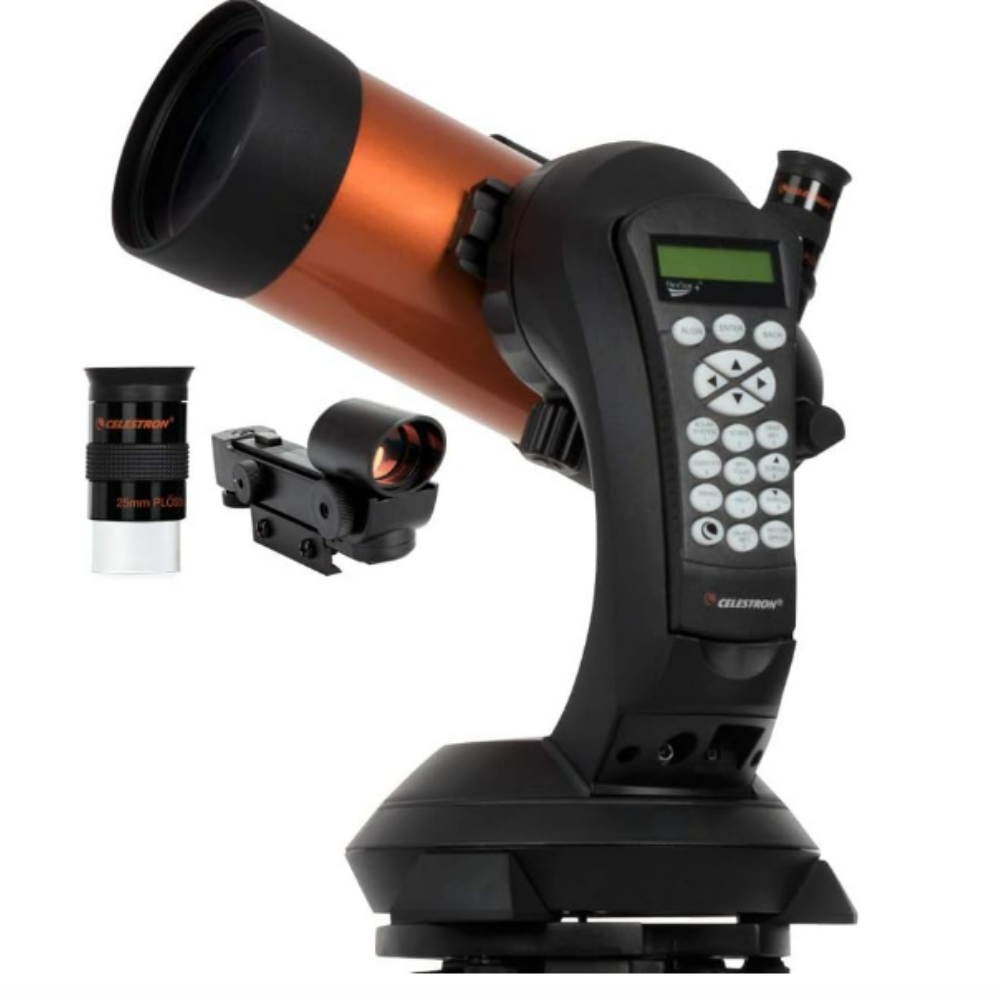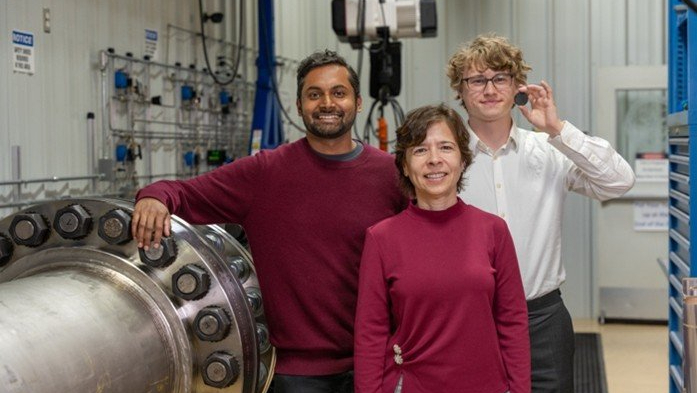Huge amounts of uncounted emissions of highly warming greenhouse gas methane are being released by “super-emitters” all over the world, satellite observations reveal.
Scientists have only recently worked out how to detect methane emissions from space, but what they have seen since has taken them by surprise. The greenhouse gas, which is 80 times more potent than carbon dioxide, is leaking from gas pipelines, oil wells, fossil fuel processing plants and landfills all over the world. It is frequently released through negligence and improper operations; the emissions, in many cases, are not accounted for in mandatory greenhouse gas inventories.
“We see quite a lot of those super-emitters,” Ilse Aben, senior scientist at the Netherlands Institute for Space Research (SRON) told Space.com. “These are large emissions, and we see a lot of them on the global scale — much more than we had expected.”
Aben heads a team of experts working with data from an instrument called Tropomi (for TROPOspheric Monitoring Instrument) that flies on the European Sentinel 5P satellite, which is part of the Earth-observing constellation Copernicus.
Related: 10 devastating signs of climate change satellites can see from space
Sentinel 5P launched in October 2017, and Tropomi started providing data a few months later. In the years since, scientists have slowly learned how to reliably interpret its measurements.
“We measure methane concentrations in the total column from the top of the atmosphere down to the surface,” Aben said. “What we are looking for is the little bit of extra signal that suggests something is being released on the ground.”
Tropomi pinpoints emission sources with a rather crude resolution of 3.4 by 4.3 miles (5.5 by 7 kilometers), an area about the size of a smaller city. But the Tropomi team collaborates with Canadian company GHGSat, which currently flies three methane-detecting satellites, the first of which launched in 2016. GHGSat provides a much more detailed resolution of 66 feet (20 meters), which enables the company to do finer detective work.
“With Tropomi, we look for these hotspots on a global scale,” said Aben. “We measure methane across the globe every day, and then we provide these locations to GHGSat and they can zoom in and pinpoint the exact facility that is leaking those emissions.”

The oil industry’s dirty secrets
The collaboration has proved fruitful. In data gathered over the first two years of Tropomi’s operations, scientists discovered major leaks of methane in the oil and gas fields of Turkmenistan, most of which were completely preventable.
Oil and gas fields must build flare installations that prevent methane from leaking into the atmosphere, and Aben said that these leaks suggest those installations are not being used properly.
“These emissions actually relate to flare installations that are not being flared in the oil and gas industry,” said Aben. “Flaring is meant to get rid of the methane gases by burning them. It would obviously be better to capture the gas, but they are not even burning it. It’s just methane pouring out, and that is not normal operations.”
The Tropomi measurements revealed thousands of tonnes (in some cases even tens of thousands of tonnes) of methane leaking from 29 plants every hour.
And the problem is not limited to Turkmenistan. A separate analysis of Sentinel 5P data released by French analytics company Kayrros in March this year found frequent methane leaks on three major pipelines supplying natural gas from Russia to Europe. Most of these events happened during maintenance work. Surprisingly, Kayrros detected 40% more leaks in the pandemic year 2020 compared to 2019, in spite of the overall reduction in gas imports from Russia to Europe, which was reported by the International Energy Agency.
The U.S. is not blameless either. American scientists, using the Tropomi data, detected huge amounts of methane leaking from abandoned uncapped gas wells in Pennsylvania, and quantified massive leaks from several gas well blowouts that spouted methane for weeks.
Yasjka Meijer, the mission scientist of Europe’s planned greenhouse gas monitoring mission CO2M, told Space.com that combined, all these leaks might account for much more than the emissions that natural gas companies report. These hidden emissions could, in fact, undermine the effectiveness of the shift away from the burning of coal toward the burning of gas for electricity generation, Meijer said. Many countries rely on gas as a temporary measure to decrease greenhouse gas emissions while developing fully renewable energy resources.
“A lot of oil and gas producers say that their average leakage is about 3 to 4%,” said Meijer. “It turns out to be much more. But burning gas in a power plant outperforms coal in terms of the carbon footprint only if the leakage is not more than about 8%. With the numbers now, we actually have doubts, because it might be perhaps 10 or 15% and then the global climate impact would be much larger.”
But it’s not just the fossil fuel industry that has its dirty emission secrets. Aben said the team was almost shocked at the extent of methane plumes leaking from landfills.
“Before we saw the first one, I had never thought we would be able to see landfill emissions from space,” said Aben. “That certainly gave us a ‘wow’ moment when we saw it for the first time. And now there’s a whole bunch of them that we have detected.”

Early stages
Thorsten Fehr, head of the atmospheric section at the European Space Agency (ESA), which is developing the CO2M mission and operating Sentinel 5P for Copernicus, cautions that monitoring greenhouse gas emissions from space is still in its early stages. But the space industry is ready to take the technology another step further and effectively start policing emitters from space. Such a capability will be crucial to keep the world on track to meeting its emission reductions targets in order to keep global warming close to the 2.7 degrees Fahrenheit (1.5 degree Celsius) limit set out in the Paris Agreement negotiated at the 2015 United Nations Climate Change Conference (COP21) in Paris.
Currently, nations self-report their emissions based on the amount of fossil fuels the various sectors of their economy burn. However, countries often release these numbers on a five-year delay, and experts question their accuracy.
“The Paris Agreement asks for a transparency framework,” Fehr told Space.com. “To basically show what people are doing, and that’s exactly what we are trying to do now.”
There are currently a plethora of space missions being readied to tackle methane emissions. In addition to GHGSat, Sentinel 5P and CO2M, a U.S. company called MethaneSAT, a spin-off from the nonprofit organization Environmental Defense Fund, plans to launch a new methane-monitoring spacecraft in October 2022. Earth-observation company Planet, together with a range of research institutions including NASA’s Jet Propulsion Laboratory in California, are developing an entirely new constellation of methane-monitoring satellites as part of a public-private partnership.
This sneaky greenhouse gas is a focus of an international pledge that was introduced at the UN Climate Change Conference (COP26) in Glasgow on Nov. 3. Over 100 nations have signed the document, promising to cut methane emissions by 30% by 2030. According to a European Commission’s statement, this reduction alone could reduce the atmospheric warming projected by 2050 by 0.5 degrees Fahrenheit (0.28 degrees Celsius).
Scientists call methane emissions a “low-hanging fruit” and hope that the reductions should be relatively easy to achieve.
“It’s in nobody’s interest to release this methane,” said Meijer. “It should be easier to regulate than carbon dioxide, because for carbon dioxide, you would have to tell people to stop burning the fossil fuels.”
The carbon dioxide challenge
To similarly monitor carbon dioxide emissions is much more complicated. But Fehr says ESA is ready for the challenge, and with the CO2M mission plans to provide the first of its kind tool capable of distinguishing individual anthropogenic sources of carbon dioxide from space.
NASA’s Orbiting Carbon Observatory 2, launched in 2014, currently provides data on the regional distribution of carbon dioxide sources and natural sinks, reflecting global trends and seasonal changes. Its sister instrument, the Orbiting Carbon Observatory 3, is attached to the International Space Station, taking measurements since 2019. But the resolution of these two instruments is nowhere near detailed enough to spot individual emitters.
“There’s a big difference between monitoring carbon dioxide and methane,” said Meijer. “The [natural] amount of methane in the air is much lower than the amount of carbon dioxide. Plus what is being emitted from sources is much higher than the background so it’s much easier to distinguish it from space. For carbon dioxide it’s the opposite. There’s already a lot of carbon dioxide in the atmosphere naturally and the addition of individual sources is relatively small, you’re talking about a quarter of a percent.”
There are currently nearly 420 parts of carbon dioxide in a million parts of air, according to the U.S. National Oceanic and Atmospheric Administration. In the 1700s, before humankind started burning fossil fuels, the value was about 280, according to the Environmental Protection Agency. The CO2M mission, expected to launch by 2026, hopes to measure the concentrations with an accuracy of 0.25%, which, according to Meijer, is still a technical challenge.
Making the world to cooperate
Aben hopes satellite observations will help keep the world on track to tackle climate change. The scale of the methane leaks surprised scientists, she said, but now that the previously hidden gas pipeline leaks and polluting landfills can finally be seen, fixing the problem is, at least, possible.
“I think that these satellite observations will certainly stir up and change the way we will be reporting emissions,” she said. “We are seeing things that I think are not visible at the moment in some of the reporting. Not all of the reporting is wrong, but this certainly adds a category of emissions that we might have missed.”
Meijer, however, cautions that it might still take a considerable effort to get the whole world on board. “This is the first time that you can actually put a finger on it,” he said. “But the problem is, how are you going to communicate with a country somewhere in Africa that there is too much methane leaking out of their facilities.”
Related stories:
At the recently concluded COP26 conference, nations strengthened their commitments to the goals of the Paris Agreement, agreeing to speed up the elimination of coal from the energy mix and increase their emission reduction efforts across the board.
With the new pledges, the world might be on track to keeping the global temperature rise within 3.2 degrees F (1.8 degrees C). That value is still above the preferred limit of 27 degrees F (1.5 degrees C), but considerably better than the 4.8 degrees F (2.7 degrees C) trajectory predicted under previous plans. The battle is by far not yet won.
Follow Tereza Pultarova on Twitter @TerezaPultarova. Follow us on Twitter @Spacedotcom and on Facebook.


